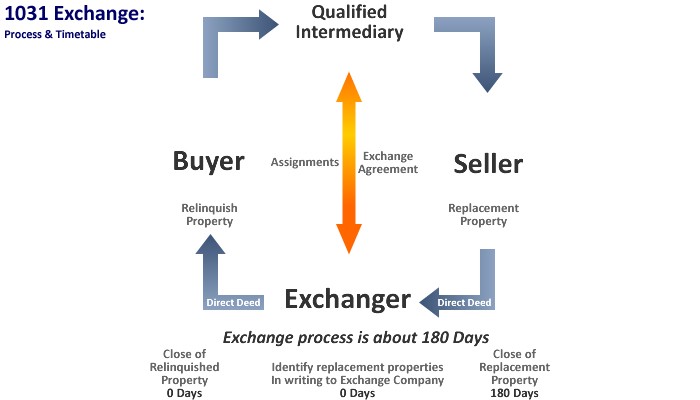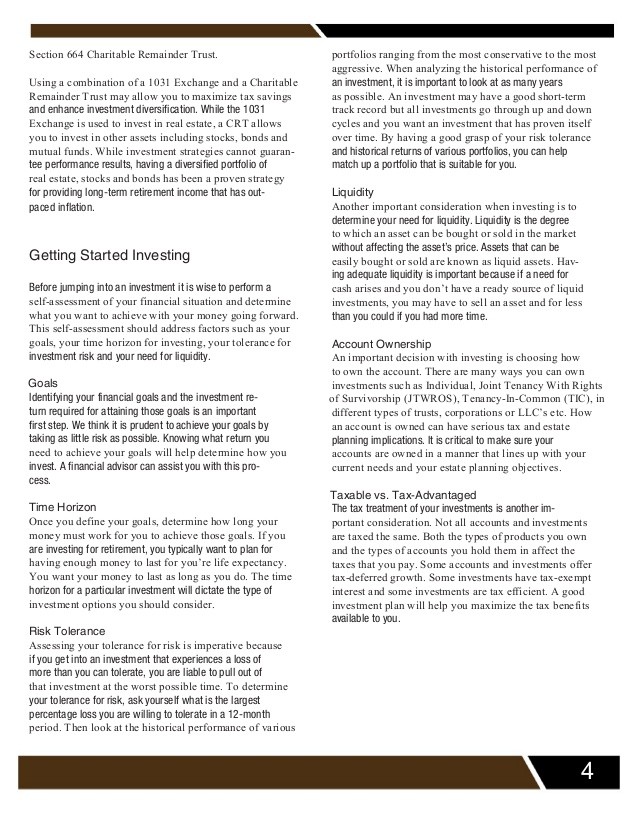Investing in upREITs as 1031 Exchange Replacement Property Solution
Post on: 16 Июнь, 2015 No Comment

UPREITs as 1031 Exchange Replacement Property Solutions
What is a Real Estate Investment Trust?
Real Estate Investment Trusts, usually referred to as REITs, are very similar in concept to a mutual fund that invests in real estate and real estate related assets. Investors buy shares or units in the REIT and the REIT in turn buys the real estate. REITs are therefore considered securities and can be publicly traded (bought and sold) like any other publicly traded stock, bond or mutual fund, or it can be privately traded and bought or sold through registered representatives that specialize in non-publicly traded REITs.
Real Estate Investment Trusts generally acquire and own numerous investment real properties that provide investors with a well diversified investment real estate portfolio. REITs are also well known for providing handsome cash flows in the form of dividends paid to investors.
Can an Investor 1031 Exchange into a REIT?
Investors often ask if they can 1031 Exchange out of investment real estate and acquire an interest in a Real Estate Investment Trust as their replacement property. The answer is no because buying shares in a REIT is considered to be personal property (i.e. a security interest) and not an interest in real estate and is therefore not like-kind to the real property that was sold. The investor would need to acquire a direct interest in real estate in order to qualify for tax-deferred exchange treatment under Section 1031.
There is, however, one exception to this question. Investors can sell rental or investment real property and then 1031 Exchange into an interest in an upREIT, which is also referred to as a 1031/721 Exchange or a 1031 Exchange followed by a 721 Contribution.
What is an upREIT (1031/721 Exchange)?
An Umbrella Partnership Real Estate Investment Trust, usually referred to as an upREIT or a 1031/721 Exchange, can provide virtually the same tax-deferred benefits to real estate investors that a 1031 Exchange provides when they contribute their investment real property into a new ownership structure that includes an operating partnership with a REIT. Investors can effectively dispose of real estate and acquire an interest in a REIT on a tax deferred basis by taking advantage of the upREIT strategy.
A pure 721 Exchange transaction would involve a direct contribution of the investor’s real property into the operating partnership in exchange for an interest in the operating partnership. This rarely happens because the REIT is generally not interested in the real estate offered by the investor.
UPREITs are generally structured as a two step process using a combination of a tax-deferred exchange pursuant to Section 1031 of the Internal Revenue Code (1031 Exchange) and subsequently a tax-deferred contribution of real estate into a partnership pursuant to Section 721 of the Internal Revenue Code (721 Exchange).
The first step is selling the relinquished property and structuring a 1031 Exchange. However, instead of searching for suitable replacement property the investor would identify and acquire a fractional interest (tenant-in-common interest) in real estate that the REIT has already designated. This completes the 1031 Exchange portion of the transaction.
The second step is to contribute the fractional interest into the operating partnership after a holding period of 12 to 24 months as part of a 721 Exchange (tax deferred contribution into a partnership). The investor receives an interest in the operating partnership in exchange for his or her contribution of the real estate and is now effectively part of the REIT.
This concise overview of the process to 1031 Exchange out of rental or investment real estate and into an upREIT has been oversimplified, but it gives you the general idea of how you can participate in an upREIT investment structure.

Tax Deferred Treatment and Benefits
Capital gain and depreciation recapture taxes are tax-deferred as long as the upREIT continues to hold the investment real property and the investor continues to hold the interest in the operating partnership. The upREIT provides another exit strategy for investors to use when they wish to get out of direct real estate management but not pay their taxes.
The upREIT provides some great tax-deferred planning strategies, better investment diversification, increased cash flow, as well as some estate planning benefits. The upREIT has two big draw-backs, however.
Risks Associated With A 1031 Exchange Into An UPREIT
Investors who 1031 Exchange into an upREIT have exchanged into a security and therefore no longer own real estate. Since the investor now owns a security, he or she cannot 1031 Exchange out of the upREIT and into other real estate. The sale or disposition of their interest in an upREIT will result in a taxable transaction, including the recognition of their deferred capital gain and any depreciation recapture.
The upREIT also has control over the asset they 1031 Exchanged into and therefore has control over the sale or disposition of the asset. The sale or disposition of the asset can trigger the recognition of the investors deferred capital gain and any depreciation recapture. Some upREIT sponsors will guarantee that they will not trigger any taxable gain for a specified number of years, while others remain silent regarding the potential for triggering the deferred taxable gain.
back to top














